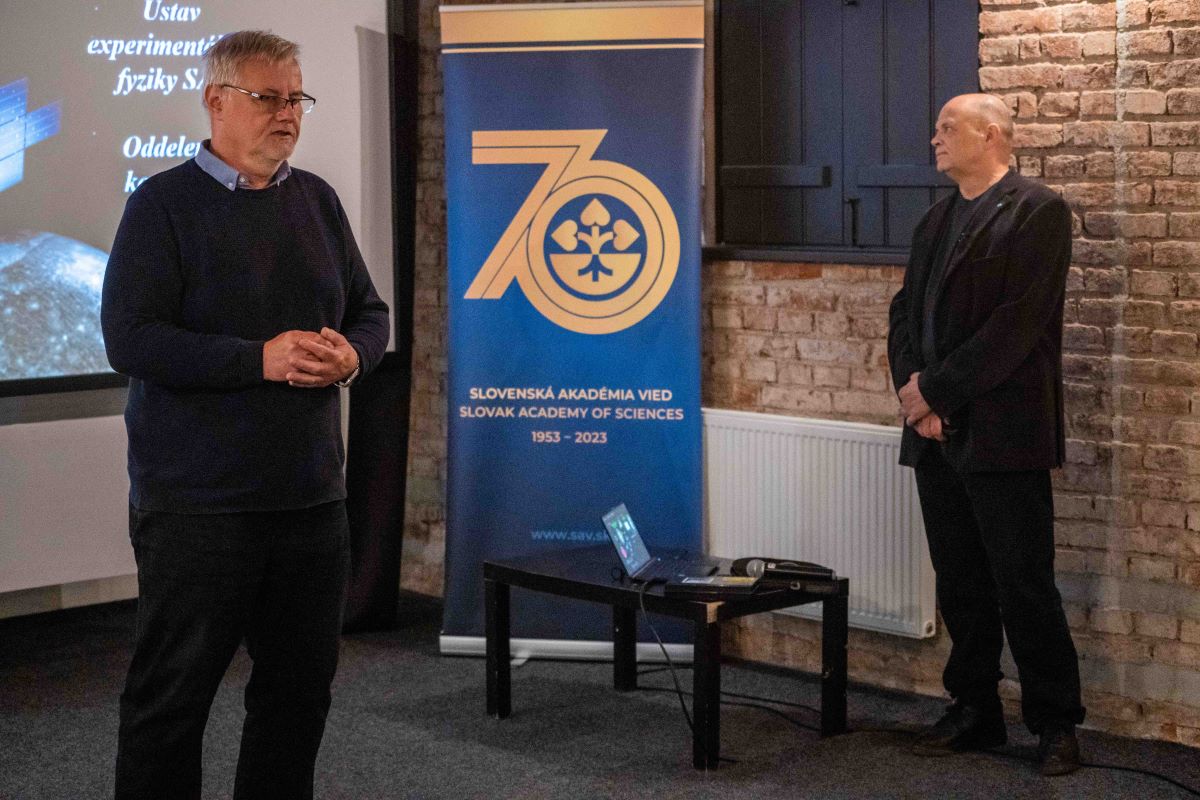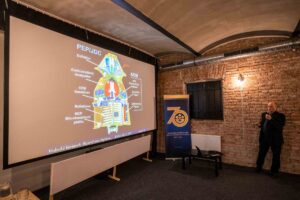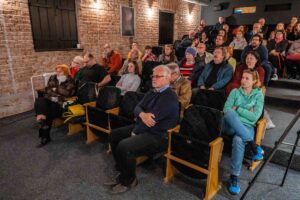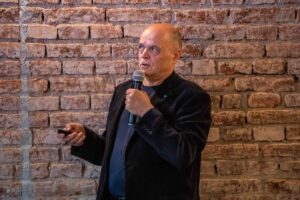Science Café: The bizarre world of Jupiter – why are we flying there?

On Friday, April 14, 2023, at 2:14PM, the Ariane 5 rocket took off from the Kourou cosmodrome, which carried the ESA JUICE probe (JUpiter ICy moons Explorer) to its eight-year long journey through space. The probe flies to Jupiter and its icy moons, and inside it also carries a piece of science from Slovakia, the anti-coincidence detector built by Ing. Ján Baláž, PhD. from the Institute of Experimental Physics SAS in Košice. Despite his work and currently also media duties, Dr. Baláž found time to participate in the Science Café, which was held shortly after the launch of the rocket on Wednesday, April 26, 2023 in Tabačka.
Those who expected just an engineering description of the work on the detector were certainly surprised. Dr. Baláž is an internationally recognized space designer, but at the same time he is a experienced astrophysicist. Currently he is one of the few people in Slovakia who is a full member of the International Academy of Astronautics IAA, which brings together leading world experts in basic research, space engineering, space biomedicine and social sciences, which is a prestige not only for him, but also for Slovakia. He is member of the Department of Cosmic Physics at the Institute of Experimental Physics SAS. You will surely remember his participation in the Rosetta mission, where his communication module was part of the Philae lander, which worked flawlessly even after 11 years in space. Other results of this department remain in the shadow of media-attractive topics; the detector on board the JUICE module is already the 26th space launch of a probe with instrument built in Košice on board(!).
Dr. Baláž started his talk with an interesting factography of Jupiter and its moons, combined with interesting comparisons. Did you know that Jupiter could fit 1,321 globes, but is “only” 318 times heavier than Earth? That its auroras are blue to purple? Or that Jupiter’s moon Europa probably contains more water than our Earth? The lecture continued with a description of the goals of the JUICE probe mission equipped with ten modern scientific experiments. Its active part will only begin after eight years of traveling through interplanetary space, during which it always steals a little energy to accelerate on the long journey to Jupiter. The probe will move around Jupiter in a very inhospitable environment, the biggest problems can be caused by the radiation of high-energy particles. And it is precisely the detection and warning before high-energy particles flying through the probe’s body and detectors that the module produced in Košice is built for. It will signal the passage of undesired particles, whose signal can confuse the probe’s detectors. Dr. Baláž even brought one copy of the detector to show to the participants of the Science Café. In total, he had to make four pieces, of which only one was “flight piece”, the others were used for testing. The module had to go through really tough tests to withstand high vibrations, low temperature and high radiation. After a really interesting presentation, rich in beautiful original images from space or from the work on the construction of the JUICE probe, the talk continued with a lively discussion with many questions, considering the technical details of the module construction, communication with the probe and its management, economic issues of the mission, questions about the composition of Jupiter and its months or inquiries about other space missions with Slovak participation. It was yet another very interesting Science Café, as Dr. Balaž is knowledgeable and very good storyteller. Everyone who came certainly did not regret it. Safe travels JUICE! And goodbye in eight years!
Original source HERE



 Contact
Contact Intranet
Intranet SK
SK






